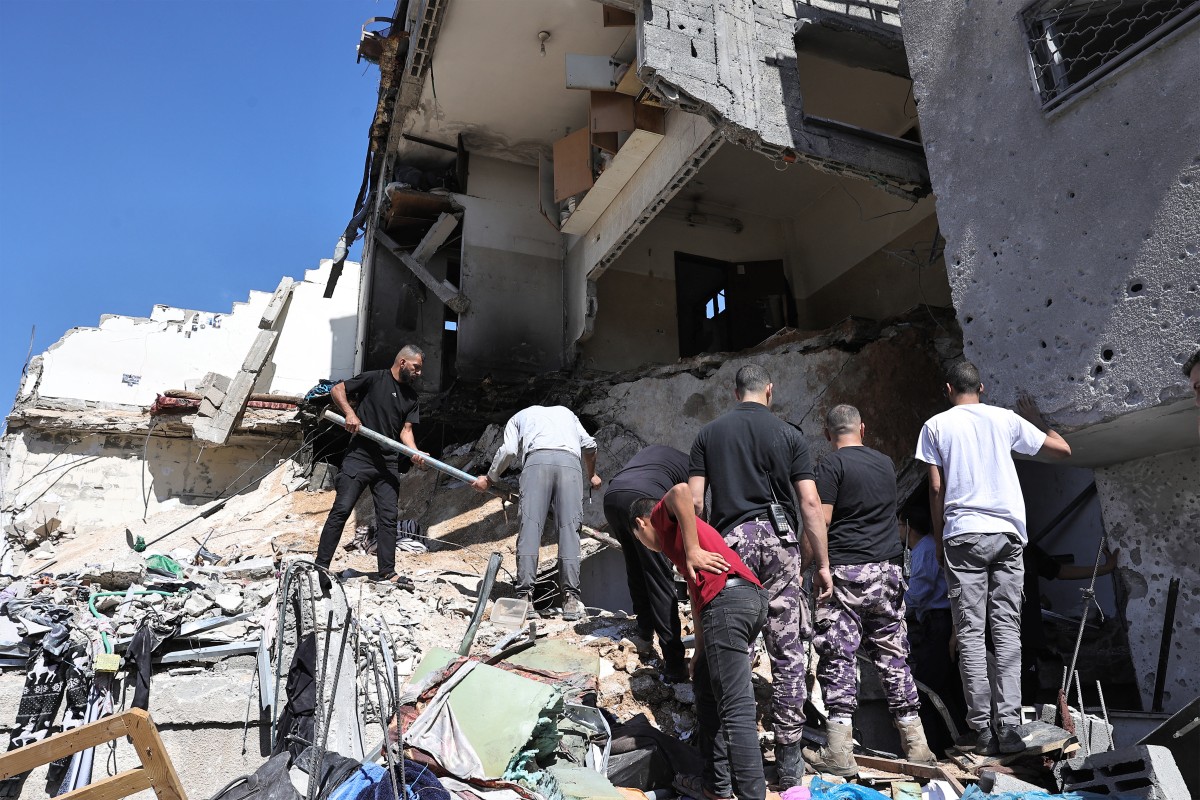Palestinian Territories – Heavy battles and bombardment hit Gaza City’s Shujaiya district for a fourth day on Sunday, as Israeli Prime Minister Benjamin Netanyahu acknowledged his forces were engaged in a “difficult fight”.
Tens of thousands of Palestinians have fled the devastated neighborhood, where the Israeli army said it has carried out raids and fought Palestinian fighters both “above and below ground” in tunnels.
Months of on-and-off talks towards a Gaza truce and hostage release deal have meanwhile made little progress, with Hamas saying Saturday that there was “nothing new” in a revised plan presented by US mediators.
The Israeli military reported clashes in central Gaza and the southern Rafah area, a week after Netanyahu declared that the “intense phase” of the war raging since October 7 was nearing an end.
The United Nations humanitarian agency OCHA estimated that “60,000 to 80,000 people were displaced” from Shujaiya since new fighting broke out there on Thursday and the army issued evacuation orders.
For those who remain, “our lives have become hell”, said 50-year-old Shujaiya resident Siham al-Shawa.
She told AFP people were trapped as strikes could happen “anywhere” and “it is difficult to get out of the neighbourhood under fire”.
“We do not know where to go to protect ourselves.”
Netanyahu said Israeli “forces are operating in Rafah, Shujaiya, everywhere in the Gaza Strip”.
“This is a difficult fight that is being waged above ground, sometimes in hand-to-hand combat, and below ground as well,” he said, according to a statement from his office, which added that “dozens of terrorists are being eliminated every day”.
‘No clean water’
Israel’s offensive has killed at least 37,877 people, also mostly civilians, according to data from the health ministry in Hamas-run Gaza.
Witnesses in Rafah reported artillery shelling and hospital medics said six people were killed in a strike at dawn.
The Israeli military launched a ground operation in the southern city in early May, leading to the closure of a key aid crossing.
The United Nations and other relief agencies have voiced alarm over the dire humanitarian crisis and threat of starvation the war and Israeli siege have brought for Gaza’s 2.4 million people.
“Everything is rubble,” said Louise Wateridge from UNRWA, the UN agency supporting Palestinian refugees, speaking from the city of Khan Yunis on Friday.
“There’s no water there, there’s no sanitation, there’s no food. And now, people are living back in these buildings that are empty shells.”
In a displacement camp in central Gaza’s Deir al-Balah, pharmacist Sami Hamid said skin infections were on the rise, particularly among children, “because of the hot weather and lack of clean water”.
“The number of skin infections has increased, especially scabies and chickenpox,” as have hepatitis cases likely linked to untreated sewage flowing right next to tents, said Hamid.
Wafaa Elwan, displaced from Gaza City, said there was “no clean water” or basic hygiene products available at the tent city.
“We no longer wash our children as before” and “treatment is not widely available,” Elwan told AFP.
“My son… can’t stop scratching.”
Stalled negotiations
About a month after US President Joe Biden outlined a truce plan, Washington last week presented “new language” for parts of the proposed deal, according to US news site Axios.
A Hamas official in Lebanon, Osama Hamdan, confirmed that the Islamist movement had received the latest proposal but said it presented “no real progress in the negotiations”.
Hamas has called for a permanent ceasefire and full Israeli withdrawal from Gaza, demands repeatedly rejected by Israel.
Protesters again took to the streets of Tel Aviv on Saturday, demanding greater efforts to return the remaining captives, and calling for early elections.
Netanyahu on Sunday said that “Hamas is the only obstacle to the release of our hostages”.
The Gaza conflict has also led to soaring tensions on Israel’s northern border with Lebanon, where the army has traded fire with the Hezbollah movement, an Iran-backed Hamas ally.
The cross-border clashes continued on Sunday, with the Shiite Muslim movement announcing three deaths among its ranks, and the Israeli military saying a drone attack in the annexed Golan Heights left one soldier seriously wounded.
Threats of a full-blown war escalated in recent weeks.
Iran’s mission to the UN, on social media on Saturday, said Israel “intending to attack Lebanon” was “psychological warfare”.
But it also warned arch-foe Israel that “full-scale military aggression” would lead to an “obliterating war” that could draw in more Tehran-aligned armed groups in the region.








